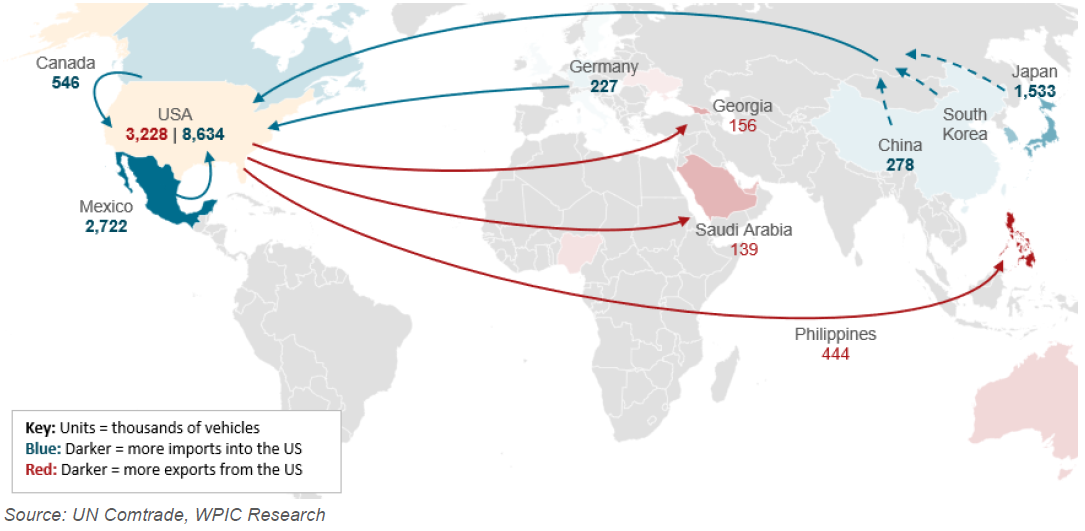US vehicle tariffs are modestly negative for PGM demand, but contagion may aggravate tight Pt market conditions
31 March 2025
In this Platinum Essentials, we assess the impact of the US’s emerging trade policies, specifically the 25% tariff on vehicle imports from 3rd April 2025 and parts from 3rd May 2025. The US is a net importer of vehicles (large gasoline US vehicles are typically unsuitable for overseas markets) with ~55% of vehicles sold in the US being made abroad. Tariffs are effectively a tax on the consumer and increase vehicle prices. Using consumer purchasing/price sensitivity, at a 25% tariff level, we estimate a surprisingly small negative impact on automotive demand for platinum of 70 koz and palladium of 269 koz, with the net impact potentially less due to reduced scrapping of used vehicles and thereby lower PGM recycled supply. However, fears of tariffs on metals imports, which is already distorting market conditions (link), could have a more significant and outsized impact on accentuating current market tightness.
The US is the second largest automotive market globally and is served by an international supply chain. The US imported 8.6M vehicles in 2023, while US$92B of component imports support domestic production of 10.5M vehicles (including commercial). The US’s trade deficit associated with the automotive sector was ~US$300B in 2024, a significant part of the ~US$1,000B national deficit. While tariffs may narrow trade deficits, re-domiciling production takes time and will also increase costs that will also in some form be passed onto the consumer, negatively impacting demand. In general, a rising share of US vehicle imports had led to a decade of vehicle price deflation in real terms from 2010, supporting US sales. Historic sales and price data show a 1% change in the real price of new vehicles impacts sales by 0.5% to 0.6%. In the unlikely scenario that the full 25% tariff is added to vehicle prices, US demand for imported vehicles could decline by 1.3M while the impact on domestically produced vehicles would equate to 0.4M units from higher priced parts.
In addition, the fears that tariffs could spread to PGM metal imports with the corresponding motivation to get metal into the US ahead of time and the artificial market distortions this causes, as well as the growing intergovernmental rift between the Trump administration and South Africa, could have a bigger effect in the near-term.

Contacts:
Edward Sterck, Research, [email protected]
Wade Napier, Research, [email protected]
Kaitlin Fitzpatrick-Spacey, Research, [email protected]
Brendan Clifford, Head of Institutional Distribution, [email protected]
WPIC does not provide investment advice.
Please see disclaimer for more information.
